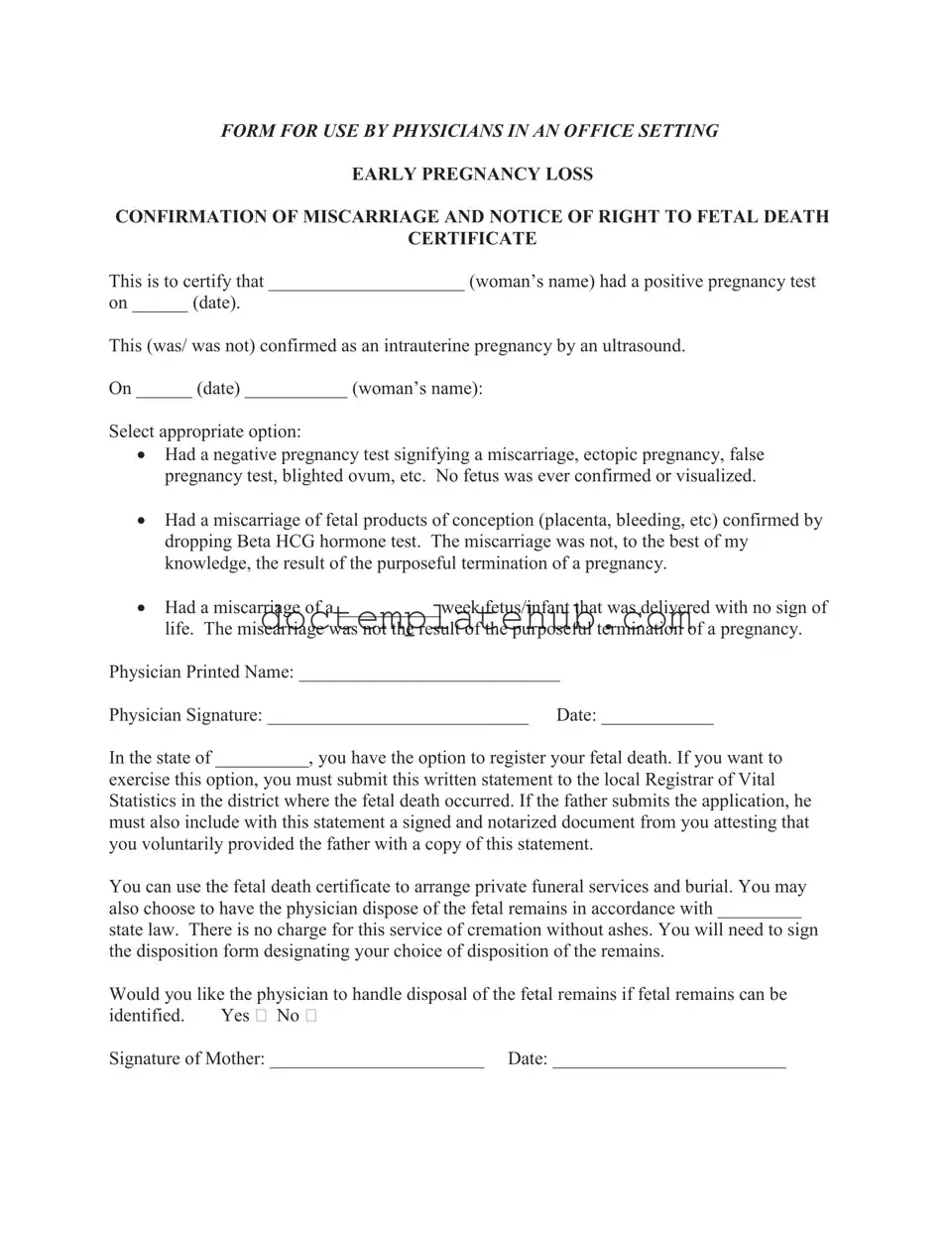What is the Miscarriage Discharge Paper form?
The Miscarriage Discharge Paper form is a document used by physicians to confirm a miscarriage. It includes essential details such as the woman’s name, dates of pregnancy tests, and the physician's assessment of the situation. This form serves as an official record of the miscarriage and outlines the woman's rights regarding the fetal death certificate.
Why is this form important?
This form is crucial for several reasons. It provides a formal acknowledgment of the miscarriage, which can be necessary for medical, legal, or emotional reasons. Additionally, it informs the woman of her rights regarding the registration of fetal death and options for the disposition of fetal remains.
What information does the form require?
The form requires the woman's name, the date of her positive pregnancy test, confirmation details from an ultrasound, and the date of the miscarriage. It also includes sections for the physician's printed name, signature, and the date of completion.
Can I register my fetal death using this form?
Yes, you can register your fetal death using the information provided in this form. However, you must submit the written statement to the local Registrar of Vital Statistics in the district where the fetal death occurred. This process ensures that the fetal death is officially recorded.
What if I want the father to submit the application for fetal death registration?
If the father wishes to submit the application, he must include a signed and notarized document from you. This document must attest that you voluntarily provided him with a copy of the statement. This step is essential for maintaining proper legal protocols.
What options do I have for the disposition of fetal remains?
You have several options for the disposition of fetal remains. You can choose to have the physician handle the disposal according to state law, or you can arrange private funeral services and burial. The form allows you to specify your preference, ensuring that your wishes are respected.
Is there a charge for the physician to dispose of fetal remains?
No, there is no charge for the service of cremation without ashes. If you choose this option, you will need to sign a disposition form to designate how you would like the remains to be handled.
What if fetal remains cannot be identified?
If fetal remains cannot be identified, you will still have the option to choose how you want them to be disposed of, but the specifics may vary based on state law and the physician’s policies. It is important to discuss your options with your healthcare provider.
How do I indicate my choice regarding the disposal of fetal remains?
You can indicate your choice by completing the section on the form that asks whether you would like the physician to handle the disposal of the fetal remains. You will need to check “Yes” or “No” and sign the form to confirm your decision.
What should I do if I have more questions about this form?
If you have more questions about the Miscarriage Discharge Paper form, it is advisable to speak directly with your healthcare provider. They can provide clarity on the process, your options, and any other concerns you may have during this difficult time.
